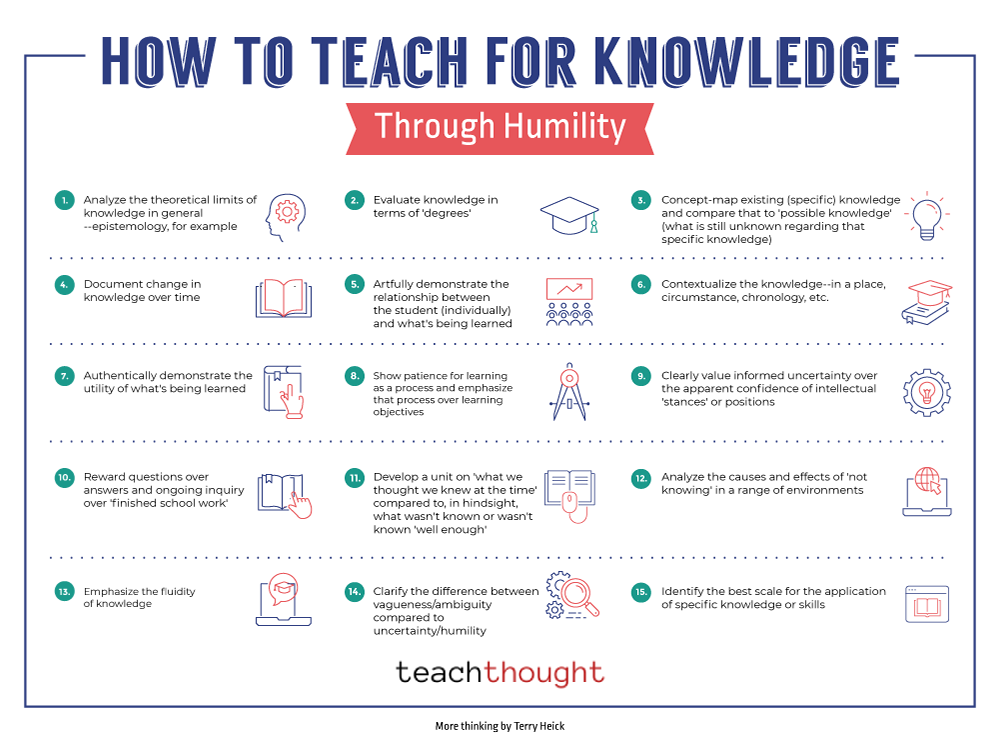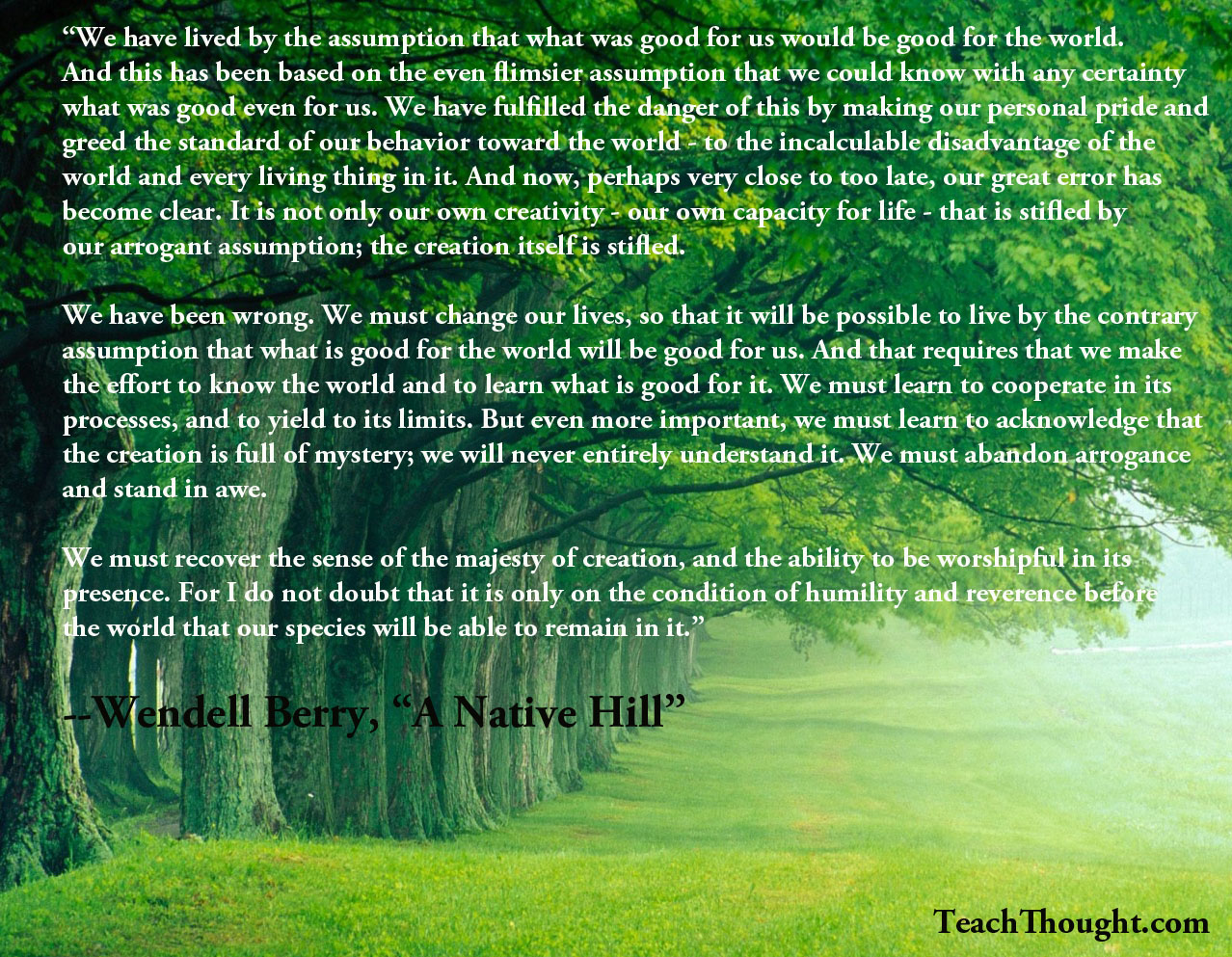

by Terry Heick
Humility is an interesting beginning factor for discovering.
In an era of media that is electronic, social, chopped up, and endlessly recirculated, the difficulty is no more access yet the quality of gain access to– and the reflex to then judge uncertainty and “fact.”
Discernment.
On ‘Understanding’
There is a tempting and warped sense of “knowing” that can result in a loss of respect and even privilege to “know points.” If absolutely nothing else, modern-day technology access (in much of the globe) has actually changed subtlety with spectacle, and process with accessibility.
A mind that is appropriately observant is likewise properly modest. In An Indigenous Hill , Wendell Berry indicates humility and restrictions. Standing in the face of all that is unidentified can either be overwhelming– or enlightening. How would it alter the knowing procedure to begin with a tone of humility?
Humbleness is the core of crucial reasoning. It says, ‘I don’t recognize sufficient to have an informed opinion’ or ‘Let’s discover to decrease uncertainty.’
To be independent in your own expertise, and the limits of that expertise? To clarify what can be known, and what can not? To be able to match your understanding with an authentic requirement to know– job that normally enhances vital assuming and continual query
What This Looks Like In a Classroom
- Evaluate the restrictions of expertise in ordinary terms (a straightforward intro to epistemology).
- Examine expertise in levels (e.g., particular, probable, feasible, not likely).
- Concept-map what is currently comprehended regarding a specific topic and contrast it to unanswered concerns.
- File just how expertise changes over time (personal knowing logs and historical photos).
- Demonstrate how each student’s point of view shapes their partnership to what’s being discovered.
- Contextualize understanding– place, circumstance, chronology, stakeholders.
- Show genuine energy: where and exactly how this understanding is utilized outside institution.
- Program patience for learning as a procedure and highlight that process together with purposes.
- Plainly value educated unpredictability over the self-confidence of quick final thoughts.
- Award continuous concerns and follow-up investigations more than “finished” answers.
- Create a device on “what we assumed we knew after that” versus what knowledge reveals we missed.
- Examine causes and effects of “not understanding” in science, background, civic life, or everyday decisions.
- Highlight the liquid, progressing nature of knowledge.
- Separate vagueness/ambiguity (absence of clarity) from uncertainty/humility (awareness of limits).
- Recognize the most effective range for applying certain knowledge or skills (person, neighborhood, systemic).
Research Keep in mind
Research reveals that individuals who practice intellectual humility– wanting to confess what they do not understand– are much more open up to learning and much less likely to cling to false certainty.
Source: Leary, M. R., Diebels, K. J., Davisson, E. K., et al. (2017 Cognitive and social attributes of intellectual humility Individuality and Social Psychology Notice, 43 (6, 793– 813
Literary Example
Berry, W. (1969 “A Native Hill,” in The Long-Legged Residence New York City: Harcourt.
This concept may seem abstract and level of place in progressively “research-based” and “data-driven” systems of understanding. Yet that becomes part of its worth: it aids pupils see knowledge not as taken care of, but as a living process they can join with care, evidence, and humility.
Training For Understanding, Understanding With Humbleness

